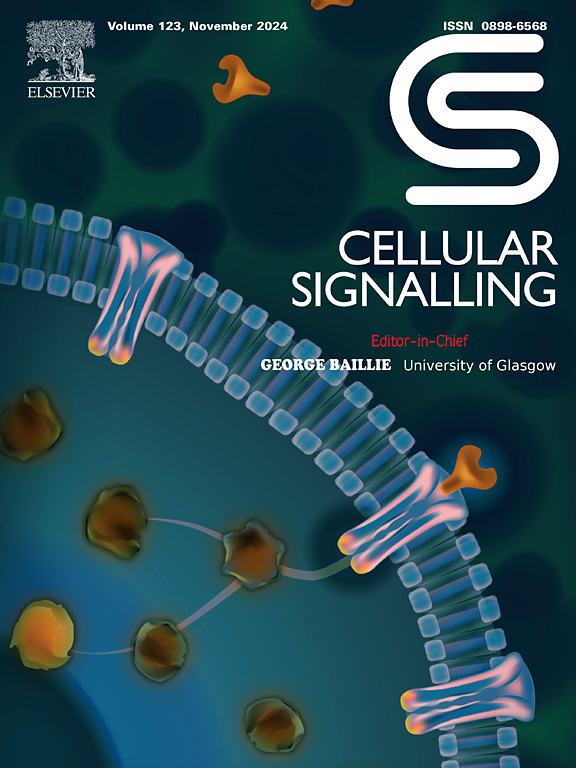Bmal1 upregulates ATG5 expression to promote autophagy in skin cutaneous melanoma
IF 3.7
2区 生物学
Q2 CELL BIOLOGY
引用次数: 0
Abstract
Background
Skin cutaneous melanoma (SKCM) is a highly aggressive and malignant tumor that arises from the malignant transformation of melanocytes. In light of the limitations of existing treatment modalities, there is a pressing need to identify new drug targets for SKCM. Aryl-hydrocarbon receptor nuclear translocator-like (ARNTL), also known as Bmal1, is a gene that has been linked to the onset and progression of cancer. However, its role in SKCM remains understudied.
Methods
The expression of Bmal1 mRNA and protein was detected using TCGA, GTEx, CCLE, and ULCAN databases. Moreover, survival analysis was performed to investigate the association between Bmal1 and immune invasion and gene expression in immune infiltrating cells via CIBERSORT, R programming, TIMER, Sangerbox, Kaplan-Meier. The study also explored the role of proteins associated with Bmal1 by using R programming and databases (STRING and GSEA). Both in vitro and in vivo studies were conducted to examine the potential role of Bmal1 in SKCM.
Results
Compared to normal tissues, the expression level of Bmal1 was significantly reduced in SKCM. Which has been associated with its poor prognosis. Similarly, its expression in SKCM was substantially correlated with immune infiltration, while biogenic analysis indicated that it could potentially influence the tumor immune microenvironment (TME) by influencing tumor-associated neutrophils (TANs). Moreover, Bmal1 overexpression suppressed the proliferation and invasion of melanoma cells and enhanced apoptosis, migration, and cell colony formation.
Conclusion
This study concluded that Bmal1 is a novel biomarker that functions as both a diagnostic and prognostic indicator for the progression of SKCM.
Bmal1能上调ATG5的表达,促进皮肤黑色素瘤的自噬。
背景:皮肤黑色素瘤(SKCM)是一种侵袭性极强的恶性肿瘤,由黑色素细胞恶性转化而来。鉴于现有治疗方法的局限性,迫切需要找到治疗 SKCM 的新药靶点。芳基碳氢化合物受体核易位子样(ARNTL),又称 Bmal1,是一种与癌症的发生和发展有关的基因。然而,它在 SKCM 中的作用仍未得到充分研究:方法:利用 TCGA、GTEx、CCLE 和 ULCAN 数据库检测 Bmal1 mRNA 和蛋白的表达。此外,通过CIBERSORT、R programming、TIMER、Sangerbox和Kaplan-Meier进行生存分析,研究Bmal1与免疫侵袭和免疫浸润细胞基因表达之间的关联。研究还利用 R 编程和数据库(STRING 和 GSEA)探讨了与 Bmal1 相关的蛋白质的作用。研究人员进行了体外和体内研究,以探讨Bmal1在SKCM中的潜在作用:结果:与正常组织相比,Bmal1在SKCM中的表达水平明显降低。结果:与正常组织相比,Bmal1 在 SKCM 中的表达水平明显降低,这与其预后不良有关。同样,Bmal1 在 SKCM 中的表达与免疫浸润密切相关,而生物基因分析表明,Bmal1 有可能通过影响肿瘤相关中性粒细胞(TANs)来影响肿瘤免疫微环境(TME)。此外,Bmal1的过表达抑制了黑色素瘤细胞的增殖和侵袭,并增强了细胞凋亡、迁移和细胞集落的形成:本研究认为,Bmal1 是一种新型生物标志物,可作为 SKCM 进展的诊断和预后指标。
本文章由计算机程序翻译,如有差异,请以英文原文为准。
求助全文
约1分钟内获得全文
求助全文
来源期刊

Cellular signalling
生物-细胞生物学
CiteScore
8.40
自引率
0.00%
发文量
250
审稿时长
27 days
期刊介绍:
Cellular Signalling publishes original research describing fundamental and clinical findings on the mechanisms, actions and structural components of cellular signalling systems in vitro and in vivo.
Cellular Signalling aims at full length research papers defining signalling systems ranging from microorganisms to cells, tissues and higher organisms.
 求助内容:
求助内容: 应助结果提醒方式:
应助结果提醒方式:


